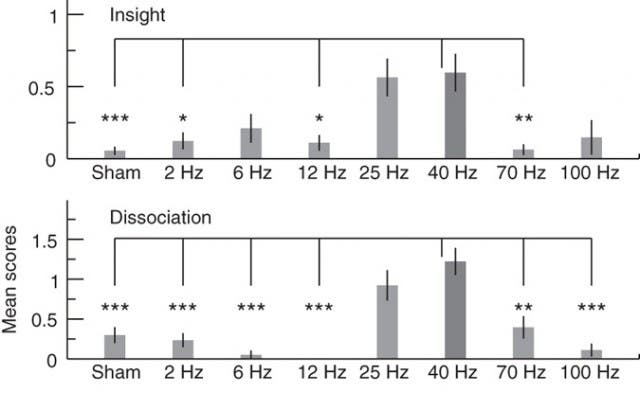
Some people have very vivid dreams, others can’t remember a thing when they wake up about what they’ve dreamed the night before. It’s said that by studying your dreams, you in fact learn more about your true inner self since dreams are your subconscious’ projections, genuine and unaltered. What happens when you’re fully aware you’re dreaming and control what’s happening around you? This state is called lucid dreaming, something which only a few people can manage to do innately, and countless more are trying to train themselves to be able to do as well. Now, a recent research found that zapping an electrical current at the right frequency and just in the right place of the brain can induce lucid dreaming about 70% of the time. The applications are numerous, most importantly related to psychological counseling (nightmare management).
Out of reach
So, what exactly is lucid dreaming? Some people never experience it, but chances are you’ve come across it at least once in your life, especially after falling back asleep after your alarm clock goes off. Realizing your dreaming is just the first tidbit, it’s all about sculpting and morphing your dream environment to your liking. In real life humans don’t have wings to fly like a bird, but when you’re lucid dreaming your actually flying and feeling what’s it like – to be more precise, you’re feeling how your subconscious mind projects this sensation. Anyway, lucid dreaming is a great tool for self realization and having a great fun all-round, but it can be difficult to reach.
People, those unfortunate enough not to have been born with the innate ability, have learned to develop all sorts of gimmicks to enter lucid dreaming. This state of consciousness is so interesting that, naturally, neuroscientists had to peer through in an effort to understand what’s going on in the human mind during these precious moments, but attempts have been curbed by the sheer rarity of the event. It’s pretty hard to strap MRIs on people and hope they’ll go lucid dreaming. They’re scientists though, so whenever possible they’ll take the shortest, most efficient route – just zap those brains!
Zap the brain and wake up dreaming
Seriously, Ursula Voss, a clinical psychologist at Frankfurt University in Germany, together with her team applied mild electrical stimuli to 27 healthy young adults who had never experienced lucid dreaming. Each participant slept overnight in the lab on several occasions. Two minutes after reaching the REM (rapid eye movement) stage of sleep, which is when dreaming happens, the subjects received a weak electrical current (2 to 100 Hertz) to the frontal lobe for 30 seconds, or a sham current with no electricity.

The researchers found that when the electrical current was a very specific frequency — between 25 and 40Hz — a full 70% of participants experienced lucid dreams. When no current was present, or the wrong frequency, not a single participant had a lucid dream. Interestingly enough, this 25-40 Hz frequency range is associated with gamma waves. The sweet spot was exactly 40 Hz, the electrical current causing the brains of the participants to work at the same frequency as the electrical stimulant and enter lucid dream state most of the time.
Voss had previously identified the 40-Hertz currents as the possible key to lucidity. In a 2009 study, she and her colleagues studied six individuals who were trained lucid dreamers, and found that during episodes of lucidity they produced brain waves in the brain’s frontal area of around 30 to 40 Hertz—much higher than is found in typical REM sleep.
Possibly a massive secret. What’s in stored for the future?
So what’s so special about these Gamma waves? Possibly everything that makes us human! This is only one of many similar studies which have identified and linked frequencies in this band with heightened consciousness. Do other conscious animals attain this frequency? That’d be interesting to find out. If anything, this knowledge can be applied for immediate medical gains, particularly treating nightmares and depression.
You can imagine what kind of fun a device which does this sort of simple trick can do to people, especially those – the grand majority of the world – who have never experienced this sort of sensation. Gadgets and devices designed to produce gamma waves would be tremendously entertaining and most likely safe. It might just be the LSD experience revolution of the ’60s, only this time everything will be literally in your head.
Findings appeared in Nature Neuroscience.






